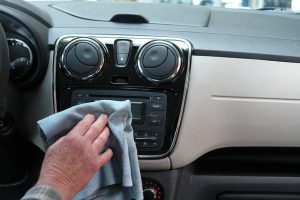Thanks to COVID, autonomous and ride-sharing service vehicles need technologies to assure that the vehicle is free of pathogens before people will get in the car.
The autonomous vehicle (AV) market depends on public confidence that its technology is safe before people buy into the market. Until recently, the public required assurance the vehicles could drive properly and safely. The COVID-19 pandemic adds a new wrinkle: people want to be assured the vehicle is free of pathogens before they will get in the car. This new trust issue will not be unique to AV markets; many manned services share the same problem. Those who can afford to abandon public transportation and ride-sharing services have already done so, and it will take time to get them back.
Companies need to install technology into vehicles to allay fears of infection. Vehicles can either find ways to repel pathogens to eliminate the need to clean or install a cleaning mechanism, which can be automatic or manual. Other technological hurdles include validation methods to convince people sanitation has occurred and to ensure no one ill has been in the vehicle since the cleaning.
To avoid having to report the car has been cleaned, different technologies are being developed to coat the car in self-cleaning surfaces. One approach is to coat car surfaces in self-cleaning substances such as copper. Data show ions in copper alloys are antiviral and antibacterial and will kill more than 99.9% of bacteria within two hours. However, copper is expensive, and not everyone wants to sit on copper (hence why you see so little in hospitals and bathrooms). Furthermore, a two hour wait time between rides is not practical. On the flip side, a Fiat Chrysler spokesperson suggests using alternative antimicrobial materials that are easy to clean to facilitate the cleaning of the vehicle.
Another method for sanitizing the vehicle would be to flood the vehicle with shorter wavelength Ultraviolet light known as UVC and/or foggers. It can be used to clean and disinfect vehicles and is already used by hospitals for the same purpose. In fact, it is already used by emergency vehicles in the United States. This method can only be used when people are not in the vehicle because of its toxic properties. The supplier Magna similarly suggests that existing fogging systems can spray hydrogen peroxide (or another disinfectant) into the cabin air when the vehicle is not occupied. A benefit of the UVC and fogging methods is that neither requires redesigning existing vehicles, it simply requires the installation of new systems.
#artificial intelligence technologies #from our experts #autonomous vehicles #covid-19 #public safety
